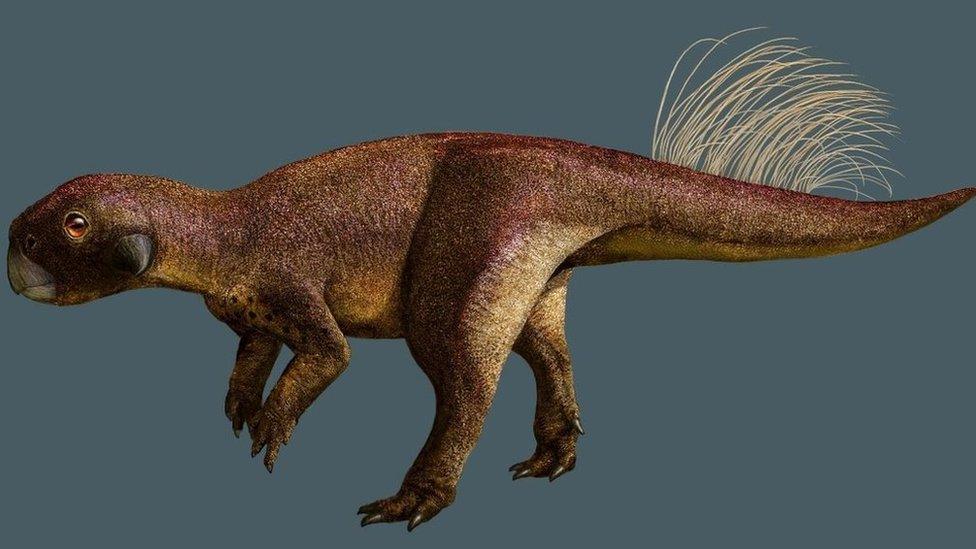Some dinosaurs had 'bellybuttons' according to new research
- Published
- comments

Did dinosaurs have bellybuttons? A group of scientists might just have the answer!
A team of researchers from all over the world have discovered the first ever dino-'bellybutton' to be found on a reptilian-like dinosaur.
The bellybutton belonged to an incredibly well preserved fossil of a Psittacosaurus dinosaur, which is thought to be around 130 million years old, and was discovered in China in 2002.
"This Psittacosaurus specimen is probably the most important fossil we have for studying dinosaur skin," said palaeontologist Phil Bell from the University of New England in Australia.
What was the Psittacosaurus like?
This is a 3D-model made by a palaeo-artist of the dinosaur
The Psittacosaurus - which means "parrot-lizard" because of its parrot-like beak - was an early relative of the three-horned dinosaur Triceratops, in a group known as the Ornithischians.
These plant-eating dinos lived around 100-122 million years ago in a time called the Cretaceous Period.
Psittacosaurus were around two metres long, and mostly walked around on their back legs.
They had short rounds heads, and long quills which grew out of their tails.
How did the researchers discover the 'bellybutton'?
A picture of the LSF scan showing where the belly button scar was.
The Psittacosaurus fossil (also known as as SMF R 4970) that the researchers studied, is one of the best preserved fossils in the world, as scientists are able to see its scaly skin and tail bristles in incredible detail.
For their research the scientists used a technique called laser-stimulated fluorescence (or LSF for short) which helped them to scan and build a detailed digital picture of the dinosaur.
For mammals, like humans and dogs, a bellybutton is the scar left behind from where their umbilical cord used to be.
The umbilical cord is how mammals get food when they are in the womb before they are born.
For egg-laying animals like birds and reptiles, they don't have an umbilical cord. Instead the baby's stomach is attached to a yolk sac which is full of nutrients.
Their 'bellybutton' is formed when they separate from the yolk and hatch from their egg.
From this picture they were able to get a closer look at the dinosaurs scales and they noticed that the pattern changed in a patch on it's belly.
"Using LSF imaging, we identified distinctive scales that surrounded a long umbilical scar in the Psittacosaurus specimen, similar to certain living lizards and crocodiles," says palaeontologist Michael Pittman from the Chinese University of Hong Kong.
"We call this kind of scar a belly button, and it is smaller in humans. This specimen is the first dinosaur fossil to preserve a belly button, which is due to its exceptional state of preservation."
The researchers wanted to stress that their new discovery didn't mean that all dinosaurs had bellybuttons.
Some reptiles and birds lose their bellybutton as they grow up, so they think the same could be true of dinosaurs.
- Published10 June 2022
- Published11 June 2022
- Published9 June 2022
